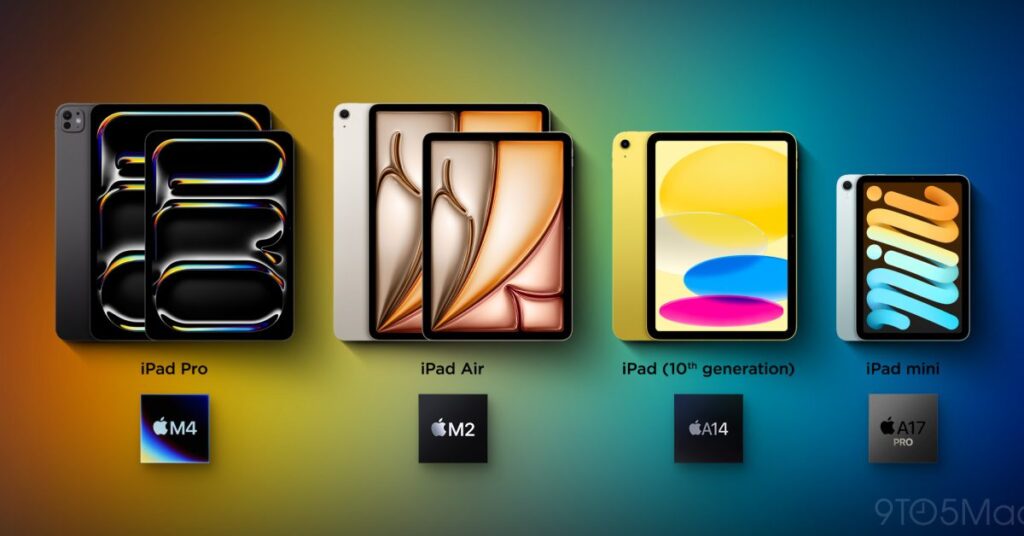
With the iPad mini 7 arriving this fall and the M4 iPad Pro and M2 iPad Air arriving this spring, we have a new lineup of Apple tablets for 2024. Keep reading to learn about the similarities and differences between all devices in our iPad Pro vs. Air, 10, mini 7 and buyer’s guide.
The 2024 iPad Pro is the first Apple device with the M4 chip to improve performance. The new mid-tier Apple tablet is the M2 iPad Air, which for the first time is available in two sizes.
iPad mini 7 now features the A17 Pro chip, which improves performance and supports Apple Intelligence. And the iPad 10 uses the old A14. So what’s the difference between these 2024 tablets?
We will explain all the specifications and features and finally create a buyer’s guide.
Comparison of iPad Pro vs. Air, 10, mini 7
performance
The big difference in performance between the new iPad Pro, Air, 10, and mini 7 is thanks to the M4 chip upgrade. Apple says it delivers up to 50% faster CPU than M2, 4x faster GPU, and 100GB/s to 120GB/s increase in memory bandwidth.
Also, the performance of M4 is several times faster compared to A14.
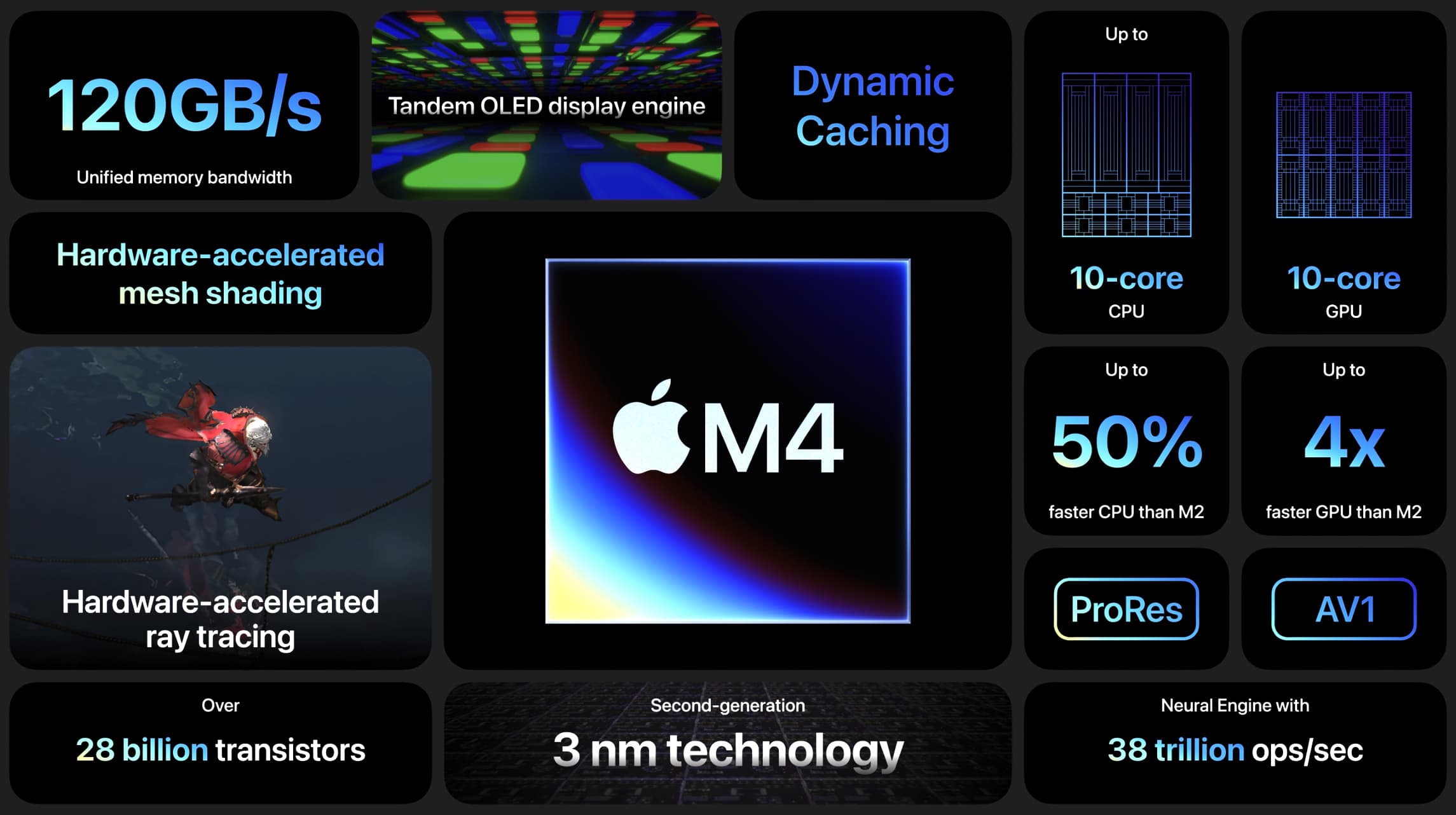
In addition to the new GPU, it has a media engine that offers hardware-accelerated 8K H.264, HEVC, ProRes, and ProRes RAW support, joining the Mac as a device capable of processing 8K video.
Other new features include 38 trillion operations per second with the M4 Neural Engine, hardware-accelerated ray tracing, and more.
Note: iPad Pro models with 128, 256, and 512GB storage have 8GB RAM, and 1TB and 2TB models have 16GB RAM.
| M4 iPad Pro | M2 iPad Air | iPad10 | iPad mini 7 | |
| chip | M4 | M2 | A14 Bionic | A15 Bionic |
| CPU | 9 cores or 10 cores | 8 cores | 6 cores | 6 cores |
| GPU | 10 cores | 10 cores | 4 cores | 5 cores |
| Support for 8K H.264, HEVC, ProRes, and ProRes RAW with hardware acceleration | ✅ | ❌ | ❌ | ❌ |
| H.264 and HEVC with hardware acceleration | – | ✅ | ❌ | ❌ |
| Hardware-accelerated ray tracing | ✅ | ❌ | ❌ | ❌ |
| neural engine | 16 cores | 16 cores | 16 cores | 16 cores |
| storage | 256GB~2TB | 128GB~1TB | 64 or 256GB | 128-512GB |
| rum | 8GB or 16GB | 8GB | 4GB | 8GB |
| memory bandwidth | 120GB/s | 100GB/s | ? | ? |
| Thunderbolt/USB 4 | ✅ | ❌ | ❌ | ❌ |
| USB-C | – | ✅ 3.1 2nd generation | ✅ USB-C 2 | ✅ USB-C3 |
| mobile phone | 5G (sub 6GHz) | 5G (sub 6GHz) | 5G (sub 6GHz) | 5G (sub 6GHz) |
| apple intelligence | ✅ | ✅ | ❌ | ✅ |
Other upgrades on the Pro include Thunderbolt/USB 4 and hardware-accelerated ray tracing.
One loss is 5G mmWave connectivity on the 2024 iPad Pro models (the 2022 version had this). This matches the 5G radio on the M2 iPad Air, iPad 10, and iPad mini 7.
One thing to keep in mind regarding performance is that unless you’re running your iPad hard at a pro level (or pro-aspiring workflow) like video editing or graphic design, you probably don’t need or even notice the M4 or M4. No. With the M2 chip upgrade, it will work fine with A14 or A17 Pro.
screen
The new M4 iPad Pro model goes beyond the iPad Air, 10, and mini 7 with a new “Ultra Retina XDR display.”
This is the first time it uses tandem OLEDs compared to the Liquid Retina display that uses LEDs on the M2 iPad Air device.
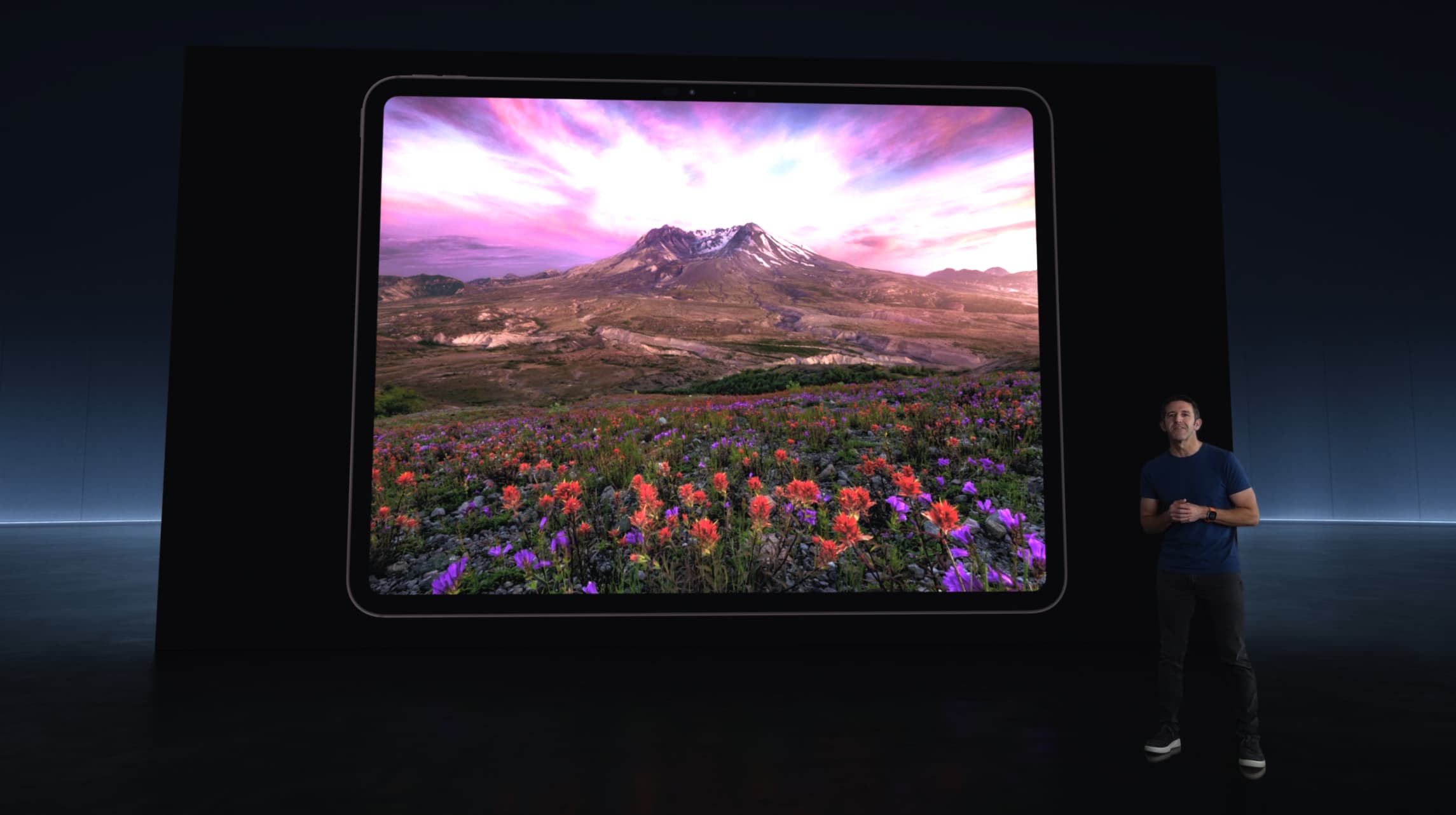
According to Apple, benefits of the new OLED display include brighter specular highlights, deeper true blacks, and improved detail in shadows and low light.
Both the small and large iPad Pro come with new OLED displays, and you can also upgrade your 1TB or 2TB M4 iPad Pro to nanotexture display glass.
You also get up to 1000 nits of brighter SDR content on the M4 iPad Pro models (600 nits for M2 iPad Pro SDR content). That’s about twice as bright as the 500 nits of SDR on the iPad Air, 10, and mini.
| M4 iPad Pro | M2 iPad Air | iPad10 | iPad mini 7 | |
| screen | 11 inch or 13 inch OLED | 10.86″ or 12.9″ LED | 10.9 inch LED | 8.3 inch LED |
| solution | 2420×1668/2752×2064 | 2360×1640/2732×2048 | 2360×1640 | 2266×1488 |
| PPI (pixels per inch) | 264 | 264 | 264 | 326 |
| display brightness | 1000 nits SDR, up to 1000 nits fullscreen XDR, 1600 nits peak (HDR only) | SDR 500/600 nits brightness | 500 nits brightness with SDR | 500 nits brightness with SDR |
| true tone | ✅ | ✅ | ✅ | ✅ |
| P3 wide color | ✅ | ✅ | ❌ | ✅ |
| Promotion (120Hz) | ✅ | ❌ | ❌ | ❌ |
| Anti-reflective and anti-fingerprint coating | ✅ | ✅ | ❌ | ✅ |
| Fully laminated display | ✅ | ✅ | ❌ | ✅ |
| nano texture display glass | Optional on 1TB and 2TB models | ❌ | ❌ | ❌ |
| liquid retina display | – | ✅ | ✅ | ✅ |
| Ultra Retina XDR display | ✅ | ❌ | ❌ | ❌ |
| Apple Pencil hover | ✅ | ✅ | ❌ | ✅ |
Display features common to all M4 iPad Pro and M2 iPad Air models include P3 wide color, fully laminated display, anti-reflective coating, Apple Pencil Hover, and True Tone.
The iPad mini 7 has most of them, and while the iPad 10 isn’t the most advanced, it still has a solid LED Liquid Retina display.
Design, dimensions, weight, color
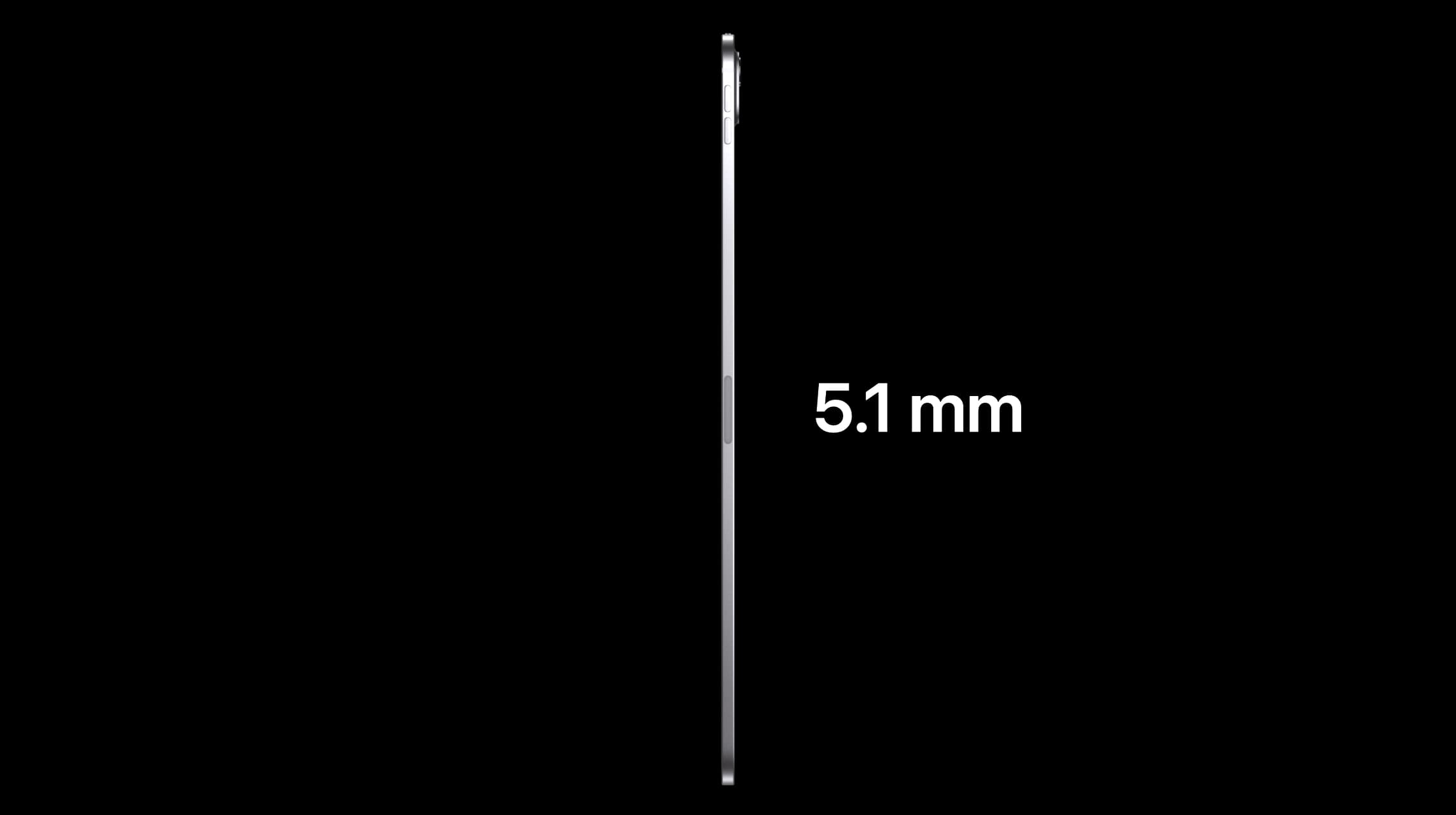
The M4 iPad Pro is the “thinnest product Apple has ever created” at 5.1mm for the 13-inch model and 5.3mm for the 11-inch version.
Plus, the new M4 iPad Pro is lighter than ever, weighing less than 1 pound for 11 inches and less than 1.28 pounds for 13 inches.
This is ironic since the “Air” versions of Apple’s iPads and Macs typically claim the title of thinnest and lightest.
However, the iPad mini 7 is lighter than any other iPad due to its smallest screen and footprint.
| 11 inch M4 iPad Pro | 11 inch M2 iPad Air | 13-inch M4 iPad Pro | 13-inch M2 iPad Air | 10.9 inch iPad 10 | 8.3 inch iPad mini 7 | |
| height | 9.83 inches (249.7 mm) | 9.74 inches (247.6 mm) | 11.09 inches (281.6 mm) | 11.04 inches (280.6 mm) | 9.79 inches (248.6 mm) | 7.69 inches (195.4 mm) |
| width | 6.99 inches (177.5 mm) | 7.02 inches (178.5 mm) | 8.48 inches (215.5 mm) | 8.46 inches (214.9 mm) | 7.07 inches (179.5 mm) | 5.3 inches (134.8mm) |
| depth | 0.21 inch (5.3mm) | 6.1mm (0.24 inch) | 0.20 inch (5.1mm) | 6.1mm (0.24 inch) | 7mm (0.28 inch) | 6.3mm (0.25 inch) |
| weight | 0.98 pounds (446 grams) | 1.02 pounds (462 grams) | 1.28 pounds (582 grams) | 1.36 pounds (618 grams) | 1.05 pounds (477 grams) | 0.65 pounds (293 grams) |
New this time around is a Space Black finish that replaces the M4 iPad Pro’s Space Gray, while the other option remains silver.
Meanwhile, the M2 iPad Air is available in four colors: space gray, starlight, blue, and purple.
iPad 10 colors are silver, blue, pink, and yellow, and iPad mini 7 colors are space gray, starlight, purple, and blue.
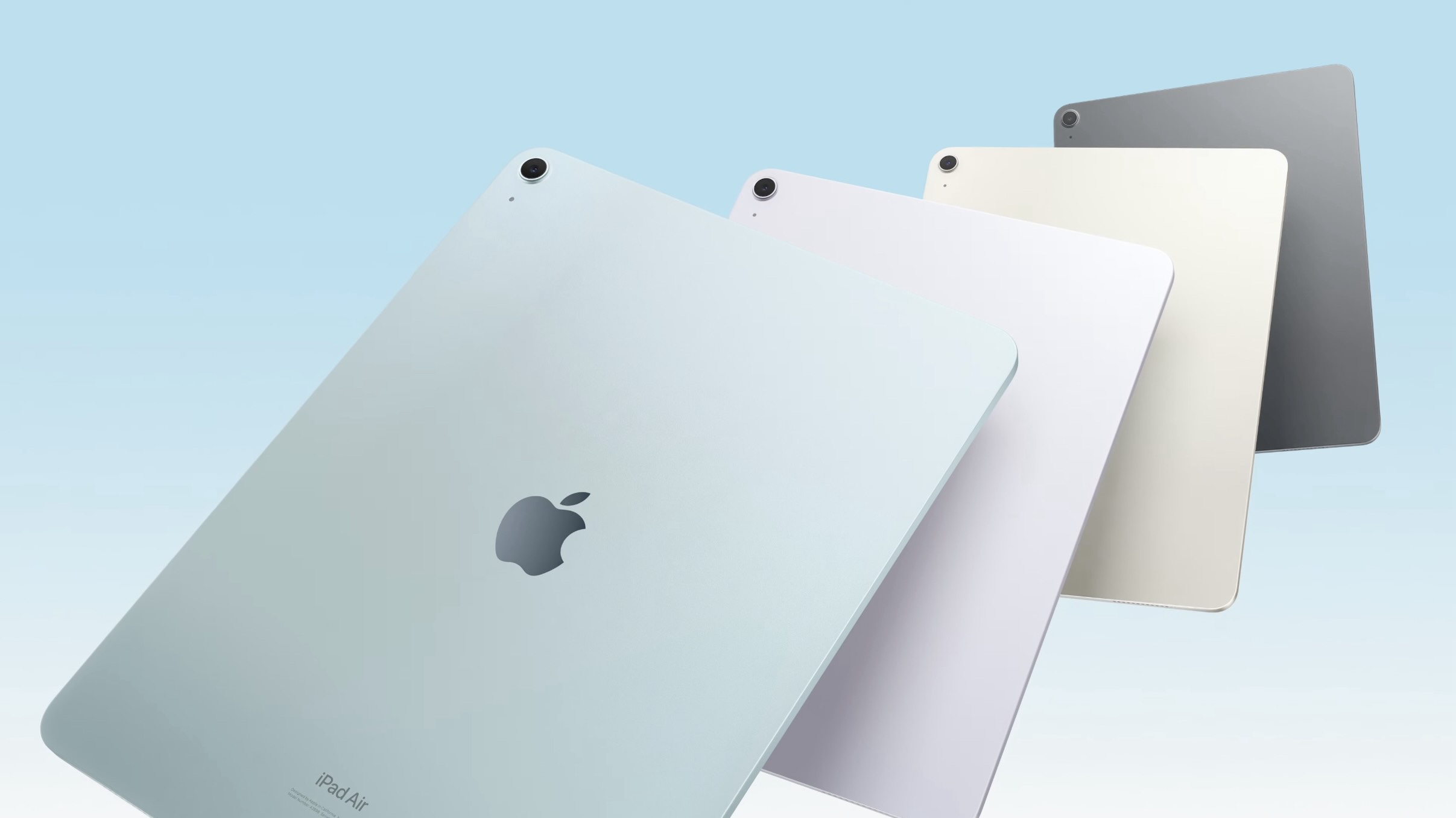
Connectivity and accessories
New iPad Pro and Air models work with the same types of Apple accessories. These come in the form of the new Magic Keyboard and Apple Pencil Pro. Alternatively, you can choose the mid-tier Apple Pencil USB-C.
The new iPad mini 7 works with Apple Pencil Pro or USB-C. You should use the latter on iPad 10.

Other major I/O upgrades for the iPad Pro are Face ID and Thunderbolt connectivity.
| M4 iPad Pro | M2 iPad Air | iPad10 | iPad mini 7 | |
| Apple Pencil Pro support | ✅ | ✅ | ❌ | ✅ |
| Apple Pencil 2nd generation support | ❌ | ❌ | ❌ | ❌ |
| Apple Pencil USB-C | ✅ | ✅ | ✅ | ✅ |
| magic keyboard support | ✅ | ✅ | ❌ | ❌ |
| Magic Keyboard Folio support | ❌ | ❌ | ✅ | ❌ |
| 5G | ✅ (less than 6GHz) | ✅ (less than 6GHz) | ✅ (less than 6GHz) | ✅ (less than 6GHz) |
| WiFi 6 | – | – | ✅ | ❌ |
| WiFi 6E | ✅ | ✅ | ❌ | ✅ |
| SIM | eSIM only | eSIM only | eSIM and nanoSIM | eSIM only |
| bluetooth | 5.3 | 5.3 | 5.2 | 5.3 |
| USB-C | ✅ USB 4 (40Gbps) | ✅ USB 3 (10Gbps) | ✅ USB 2 (480 Mbps) | ✅ USB 3 (10Gbps) |
| lightning strike | ✅ | ❌ | ❌ | ❌ |
| face recognition | ✅ | ❌ | ❌ | ❌ |
| touch id | ❌ | ✅ | ✅ | ✅ |

Beyond the mmWave drop for 5G, the M4 iPad Pro, M2 iPad Air, and iPad mini 7 devices only have eSIMs and no physical nano-SIM slots.
battery life
All current iPad models have the same battery life as previous iPads.
- 10 hours of web or video usage on WiFi
- 9 hours of web usage on mobile phone
Storage location and price
The M4 iPad Pro has updated storage, starting at 256 GB and continuing up to the 2 TB model. Nano-textured glass is another $100 upgrade.
Storage also starts at 128GB and increases to 1TB on the M2 iPad Air.
The new iPad mini 7 also has larger storage capacity.
| 11/13 inch M4 iPad Pro | 11/13 inch M2 iPad Air | iPad10 | iPad mini 7 | |
| 64GB WiFi | – | – | $349 | – |
| 64GB + cell | – | – | $499 | – |
| 128GB WiFi | – | $599/$799 | – | $499 |
| 128GB + cell | – | $749/$949 | – | $649 |
| 256GB WiFi | $999/$1,299 | $699/$899 | $499 | $599 |
| 256GB + cell | $1,199/$1,499 | $849/$1,049 | $649 | $749 |
| 512GB WiFi | $1,199/$1,499 | $899/$1,099 | – | $799 |
| 512GB + cell | $1,399/$1,699 | $1,049/$1,299 | – | $949 |
| 1TB WiFi | $1,599/$1,899 | $1,099/$1,299 | – | – |
| 1TB + cell | $1,799/$2,099 | $1,249/$1,449 | – | – |
| 2TB WiFi | $1,999/$2,299 | – | – | – |
| 2TB + cell | $2,199/$2,499 | – | – | – |
camera, video, audio
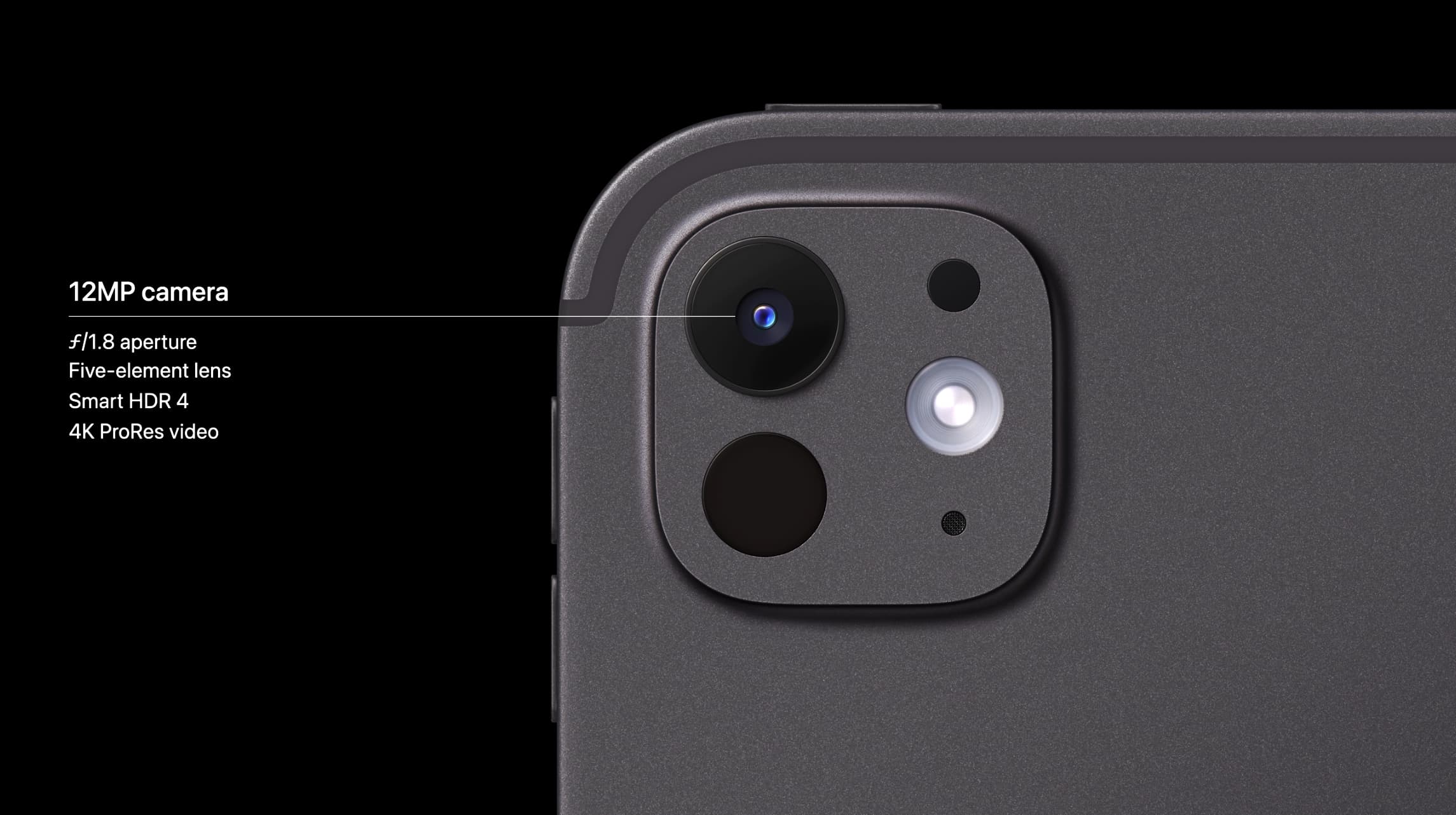
The M4 iPad Pro rear camera system includes a 12MP wide lens, LiDAR scanner, and Retina flash with True Tone.
Interestingly, the M4 iPad Pro has done away with the 10MP ultra-wide-angle lens of the M2 iPad Pro. In other words, the camera capabilities of the M4 iPad Pro and M2 iPad Air are more similar.
On the front, there’s a 12MP ultra-wide-angle lens with Center Stage support, centered on the long side instead of the short side on the 2024 M4 iPad Pro model.
The rest of the iPad lineup has a 12MP wide rear camera, but it doesn’t have all the great features of the Pro models.
| 11/13 inch M4 iPad Pro | 11/13 inch M2 iPad Air | iPad10 | iPad mini 7 | |
| 12MP wide rear lens | ✅ | ✅ | ✅ | ✅ |
| rider | ✅ | ❌ | ❌ | ❌ |
| 4K video | ✅ | ✅ | ✅ | ✅ |
| ProRes video up to 4K 30 fps | ✅ | ❌ | ❌ | ❌ |
| Expanding dynamic range | ✅ | ✅ | ✅ | ✅ |
| slow motion video | ✅ | ✅ | ✅ | ✅ |
| rear camera flash | ✅ | ❌ | ❌ | ✅ |
| TrueDepth with Face ID | ✅ (side edge) | ❌ | ❌ | ❌ |
| Ultra wide-angle 12MP front camera | ✅ (side edge) | ✅ (side edge) | ✅ (side edge) | ✅ (Portrait edge) |
| Smart HDR 3 Photos | – | – | ✅ | – |
| 4 smart HDR photos | ✅ | ✅ | ❌ | ✅ |
| center stage auto tracking | ✅ | ✅ | ✅ | ❌ |
| 4 speaker audio | ✅ | ✅ | ❌ | ❌ |
| 2 speaker audio | – | – | ✅ | ✅ |
| studio quality microphone | 4 | ❌ | ❌ | ❌ |
| standard microphone | – | 2 | 2 | 2 |
iPad Pro vs. Air, 10, mini 7 conclusion

Why buy the M4 iPad Pro?
When choosing between the M4 iPad Pro and the M2 iPad Air, it may make most sense to buy the newer model only if you’re a pro or aspiring pro with a workflow that would benefit from the M4 chip. Or, feel free to spend your money on Apple’s latest and greatest 😁.
Upgrades include a new OLED display with nano-texture options, higher brightness, higher top storage, Thunderbolt, a more powerful chip, and a slimmer design.
You can purchase the M4 iPad Pro from Apple, Amazon, Best Buy, and more.
Why buy the M2 iPad Air?
If many of the core features of the M4 iPad Pro are available in the M2 iPad Air, and the processor difference won’t be a limiting factor for many users, saving money could be a good choice. Or you can keep your current iPad.
Why buy an iPad mini 7?
At about the same price as the M2 iPad Air, the iPad mini primarily appeals to those who value a smaller form factor over specs and performance.
The iPad mini 7 can be found at Apple and soon on Amazon and elsewhere.
You can also find the iPad mini 6 at a discounted price.
Why buy an iPad 10?
Considering all the similarities and differences, the iPad 10 is a great choice for light to moderate work, school, creative workflows, kids, as well as casual use cases.
At regular price, it’s $150 to $200 cheaper than the iPad Air and has many great features, making it the best choice for most users.
You can purchase iPad 10 from Apple, Amazon, Best Buy, and more.
Thanks for reading our guide to comparing iPad Pro vs. Air, 10, and mini 7.
Read more comparisons and tutorials from 9to5Mac:
FTC: We use automated affiliate links that generate income. more.


